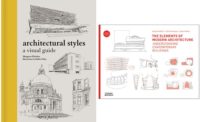The fortunes of Peter Cooper, patron and founder of Cooper Union for the Advancement of Science and Art, were based on the production of glue and household cements from byproducts of the slaughterhouse—cows’ and calves’ feet. It was a messy but profitable business, assuring Cooper a legacy as a “pioneer polluter” of New York’s pond water. Interestingly, Architecture of Nature/Nature of Architecture, which showcases work being done by architecture students in the institute built by Cooper’s industrial ingenuity, is a vivid catalogue of material and physical processes that are as alluring and troubling as the oily rainbow sheen on a contaminated puddle. The speculative schemes—products of a nearly decade-long series of design studios taught by the book’s lead author, architect and educator Diana Agrest, at Cooper Union’s School of Architecture to “deal with environmental issues”—present a dangerous kind of beauty. As historian and essayist D. Graham Burnett says in a dialogue with Agrest, “Let us hope that this book of yours, so apparently people-less, returns those who read it to the central problem of ‘us.’ Of us ‘now.’"
Agrest describes in moving terms her early and far-ranging travels, from her native Argentina to the underground homes of Matmata on the edge of the Sahara. She looked at the passing landscape in proto-architectural terms—from the “plan” of the Argentine Pampas, with its “uninterrupted horizontal” expanse, to the “section” of the geological record written in stratigraphic lines of the country’s Serranías de Hornocal mountains in the Argentine province of Jujuy. Traveling on foot, train, and in a beat-up old station wagon, the young student found the long-sought conduit between the sciences and humanities. As Agrest notes, the “central role of representation” in architecture is to create “a common ground between architecture and science in the understanding of nature.” These representations might take the form of standard architectural drawings and models adapted to nonstandard objects—such as seismic faults— as well as nature prints, scientific atlases, and even scans of electron-microscopic imagery. The significance of Agrest’s claim is apparent in “Representation as Production,” a far-ranging dialogue between the author and scholars Peter Galison and Caroline A. Jones. Like the Burnett dialogue, it is one of the book’s clarifying interludes between examples of the studio’s work. Another welcome voice is that of John McPhee, whose reprinted essay of 1980, “Basin and Range: Geological Time,” does not show signs of age.
Who, then, is the “us” of this book, and where and when are we “now?” In the acknowledgments (like a signpost at the end of this long journey), Agrest elaborates on how the visually dynamic bulk of student work from the Cooper Union design studios came together. Collectively, and as a group portrait of the generation that produced it, this compilation records changing weather patterns in a prevailing climate of warranted geoecological pessimism.
By comparison, the material illustrated in New York’s Museum of Modern Art 1971 exhibition about Cooper Union, the Education of an Architect: A Point of View (and accompanying book), with its iterations of the vaunted Nine- Square problem, seems to have come from another epoch. The past “elements” of architecture—grid, frame, post, beam, etc.—have been replaced with invisible force fields, topographical vessels, cloud formations, and sinkholes. The overall impression is the unraveling of a singular point of view. The question is no longer that of composition but of “dealing with” a turbulent state of nature in a perpetual process of becoming and/or coming undone. One future possibility is that “us” (architects) will be cropped out of the picture and nature, by whatever definition, will return to reassert itself over our now long-estranged better selves. As an atlas of us now, this handsomely produced and lavishly illustrated book covers some intriguingly uncommon ground.



